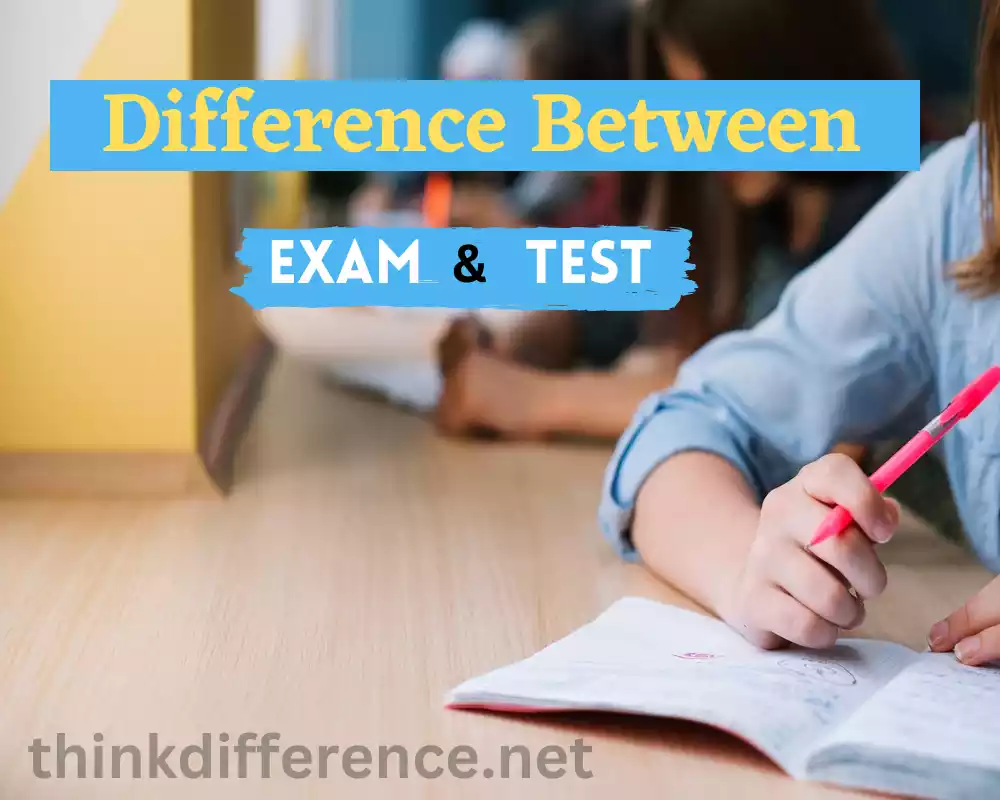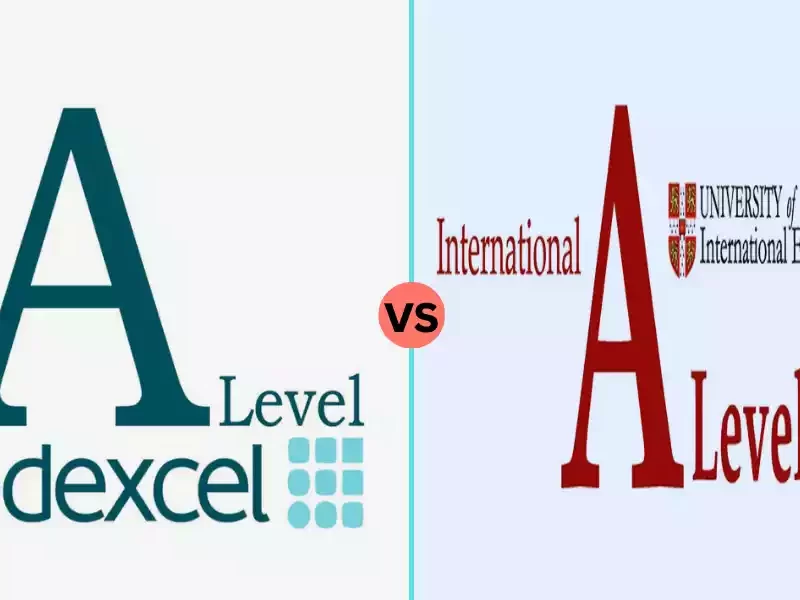Exam and Test play an integral part in measuring students’ knowledge and comprehension across a wide variety of subject matters. Exams may evaluate comprehension, critical reasoning skills, problem-solving ability and the application of acquired concepts. This article provides a comprehensive guide to exams and tests, offering insights into effective preparation strategies, test-taking tips, and the significance of assessments in educational settings.
Definition of Exam and Test
Exams are formal evaluations or assessments designed to measure an individual’s understanding and knowledge in specific subject or areas of study. Most commonly administered in educational environments like colleges or universities, exams typically aim at measuring student performance by measuring how deeply an individual has acquired knowledge over time such as critical-thinking abilities or problem solving capabilities.
They usually feature topics from multiple subjects that test depth of understanding or test certain curriculum topics that provide comprehensive evaluation. They are usually time-limited and may consist of various question types, including multiple-choice, essay, short answer, or practical tasks, depending on the nature of the subject being examined. Exams are generally structured, standardized, and may have a significant impact on an individual’s final grades or academic achievements.
Tests are a form of evaluation or assessment used to gauge an individual’s skills, abilities. Tests do not have to be administered through formal education institutions and may even be employed for employment screening or psychological analyses. Tests are targeted assessments intended to measure specific knowledge, skills, and potential.
Tests may assess cognitive abilities like logic or problem-solving or proficiency levels in specific skills sets such as languages or technical expertise. Tests come in all forms and structures ranging from multiple-choice questions to performance assessments or practical demonstrations, with scores and grades differing according to purpose and context.
They may have an effect on academic or professional standing but may also serve as diagnostics to reveal weak spots or strengths as well as suitability for certain roles, tasks or areas of study.
Importance of knowing the difference between Exam and Test
Understanding the differences between Exam and Test for various reasons of utmost importance:
- Clarity in Educational Settings: Clear understanding of the distinction helps students, educators, and administrators to effectively communicate and set expectations regarding assessment methods. It ensures that everyone involved is on the same page when discussing evaluation processes, grading criteria, and the purpose of assessments.
- Tailored Preparation: Recognizing the differences allows individuals to prepare more effectively. Exams typically require comprehensive review and revision of a broad range of topics, while tests may require more targeted preparation in specific areas or skills. Understanding this distinction helps students allocate their study time and resources appropriately.
- Assessment Objectives: Exams and tests often have different objectives. Exams assess a student’s overall knowledge, understanding, and application of concepts learned throughout a course or curriculum. On the other hand, tests are designed to evaluate specific abilities, aptitudes, or skills in a particular domain. Understanding these objectives helps individuals approach assessments with the appropriate mindset and focus.
- Grading and Performance: Exams and tests may have varying weightage on final grades or evaluations. Exams, being more comprehensive and covering a wider scope, often carry a significant weight in determining academic performance. Understanding this allows students to prioritize their efforts accordingly. Tests, while still important, may have a lesser impact on overall grades and can be seen as opportunities to demonstrate specific competencies.
- Emotional Impact: Exams and tests can have different levels of stress and anxiety associated with them. Exams, with their higher stakes and broader coverage, may induce more stress and test anxiety. Recognizing these differences can help individuals manage their emotions, develop coping strategies, and seek appropriate support when needed.
- Application in Different Settings: Understanding the distinction between exams and tests is crucial in various contexts beyond academia. In professional settings, tests may be used for skills assessment during job interviews or as part of certification processes. Being aware of these distinctions allows individuals to adapt their preparation strategies and expectations to the specific requirements of different assessment contexts.
Understanding the difference between exams and tests enhances clarity, facilitates targeted preparation, aligns expectations, and enables individuals to navigate assessments more effectively, leading to better performance and outcomes.
What does Exam mean?
Exams refer to formal assessments or exams designed to gauge an individual’s knowledge and expertise on particular subjects or courses. It is a structured and organized evaluation process used in educational settings to assess individuals’ comprehension, recall, application, and analysis of learned material.

Here are some key aspects and characteristics associated with exams:
- Formal Assessment: An exam is a formal and systematic evaluation method that follows established guidelines, procedures, and standards. It is often conducted under controlled conditions and follows a predetermined format.
- Academic Evaluation: Exams are widely utilized across academic settings – schools, colleges and universities alike – for testing students on specific areas or courses of their studies. Exams measure both knowledge as well as skills. They form an integral part of the assessment process and are often given significant weight in determining grades or academic qualifications.
- Coverage of Material: Exams typically cover a comprehensive range of topics, concepts, or skills that have been taught or studied over a specific period, such as a semester or academic year. They aim to assess students’ overall understanding and mastery of the material covered.
- Time-Bound Assessment: Exams are timed assessments in which students must respond to multiple questions or perform various tasks within a short period. The time constraint adds an element of pressure and tests individuals’ ability to manage time effectively while demonstrating their knowledge and skills.
- Various Question Formats: Exams can include different question formats, such as multiple-choice, true/false, short answer, essay questions, or problem-solving tasks. The use of various question formats allows for the assessment of different cognitive abilities, ranging from recall and recognition to analysis and critical thinking.
- Proctored Administration: Exams are often administered under proctored conditions to ensure fairness, integrity, and prevent academic misconduct. Proctors supervise the exam environment, enforce exam rules, and monitor students to maintain the security and validity of the assessment.
- Grading and Evaluation: After completion, exams are typically scored or graded based on predetermined criteria or rubrics. The grading process involves assessing individual responses, assigning scores, and providing feedback or performance evaluation to the students.
It’s important to note that the term “exam” may have slight variations in meaning and administration depending on the educational context, institution, or region. Exams are formal assessments designed to measure an individual’s knowledge, comprehension and proficiency in specific subject or courses.
What does Test mean?
Test is a term with various definitions depending upon its context.

Here are a few:
- Evaluation or Assessment: A test can refer to a method or process of evaluating or assessing someone’s knowledge, skills, abilities in a specific subject area. It is a means of determining the level of understanding or proficiency achieved by an individual.
- Examination: An educational test is an official assessment administered to students to measure their knowledge and comprehension in relation to specific subjects or courses. A test may assess comprehension, information recall, problem solving skills or application of concepts.
- Diagnostic Tool: Tests can serve as valuable diagnostic tools, helping identify strengths, weaknesses and areas for improvement. They may be utilized as performance evaluation measures as well as sources for insight into areas for growth.
- Trial or Experiment: In scientific or technical fields, a test can refer to a trial or experiment conducted to investigate a hypothesis, validate a theory, or gather empirical data. It involves the systematic observation, measurement, or manipulation of variables to assess a specific outcome or result.
- Product or Quality Evaluation: Manufacturing or quality control teams often perform tests to measure product quality, functionality or performance. It involves subjecting the item to specific conditions or criteria to determine its reliability, durability, safety, or compliance with standards.
- Screening or Assessment Tool: Tests can be used as screening tools to assess an individual’s suitability, compatibility, or eligibility for a particular role, program, or position. These tests aim to identify individuals with the desired attributes, skills, or qualifications.
The meaning of “test” depends upon its context – be it education, science, industry or any other.
Comparison table of Exam and Test
Here’s a comparison table highlighting the key differences between exams and tests:
| Aspect | Exam | Test |
|---|---|---|
| Purpose | Evaluate knowledge, understanding, and proficiency in a subject or course. | Assess specific skills, aptitudes, or areas of knowledge. |
| Scope and Coverage | Comprehensive coverage of topics, concepts, or skills within a subject or course. | Focus on specific topics, subtopics, or skills within a subject area. |
| Administration | Scheduled events under controlled conditions (e.g., proctored environment). | Administered at different times and formats (in-class, online, take-home) with more flexibility. |
| Impact on Academic Performance | Significant weightage in determining academic grades or qualifications. | Contribution to overall assessment, may have varying weightage depending on the context. |
| Timing | Often conducted at the end of a unit, semester, or academic year. | Can be used for ongoing assessment, diagnostic purposes, or at specific intervals. |
| Context | Common in K-12 education and higher education institutions. | Used in various educational contexts, including professional certifications and language proficiency assessments. |
| Focus | Overall understanding and mastery of the material covered. | Proficiency in a particular area, specific skills, or aptitudes. |
Similarities of Exam and Test
While exams and tests have some distinct differences, they also share several similarities in their nature and purpose. Here are some key similarities between exams and tests:
- Assessment of Knowledge and Skills: Exams and tests are both forms of assessments used to gauge an individual’s understanding and knowledge about specific subjects or skills sets.
- Evaluation of Learning Outcomes: Both exams and tests are designed to measure the extent to which students have achieved the learning outcomes set by the educational institution or curriculum.
- Formal Evaluation: Exams and tests are formal evaluation methods used in educational contexts to determine students’ academic performance, understanding of subject matter, and their ability to apply knowledge and skills.
- Performance Measurement: Both exams and tests aim to provide a quantitative or qualitative measure of an individual’s performance, allowing educators to assess their level of competence and compare it against predetermined standards.
- Time-Bound Assessments: Exams and tests are typically conducted within a specified timeframe. They require individuals to demonstrate their knowledge and skills within the given time constraints.
- Use of Various Question Formats: Both exams and tests can include a range of question formats, such as multiple-choice, short answer, essay questions, problem-solving tasks, or practical assessments. This allows for the assessment of different cognitive abilities and skills.
- Feedback and Learning Opportunities: Exams and tests can provide valuable feedback to students, helping them identify areas of strength and weakness in their understanding or skills. This feedback can be used to guide further learning and improvement.
- Assessment Integrity: Both exams and tests aim to ensure the integrity of the assessment process by employing measures to prevent cheating or academic misconduct. This may include proctoring, adherence to examination rules, and maintaining the confidentiality of the assessment materials.
Exams and tests serve different functions, but ultimately aim to measure knowledge and skills – making them useful tools for evaluating academic performance in schools as well as improving learning outcomes.
The Future of Exams and Tests

Exams and tests will undoubtedly change with technological innovations, educational practices and a greater emphasis on holistic assessment methods in the future.
Here are a few trends and options for shaping these future tests and exams:
- Digital Transformation: The shift towards digital platforms and online learning has already impacted the administration of exams and tests. This trend is likely to continue, with increased adoption of computer-based assessments, online proctoring, and automated grading systems. Digital platforms can offer greater flexibility, accessibility, and efficiency in conducting assessments.
- Adaptive and Personalized Assessments: Exams and tests can become more tailored and adaptive with artificial intelligence and machine learning technologies. Adaptive assessments can dynamically adjust the difficulty level and content based on the individual’s performance, providing a tailored assessment experience that focuses on their specific strengths and areas for improvement.
- Authentic Assessments: As evidence mounts against traditional tests and exams, their inaccuracy becomes clearer by the day. They simply can’t capture real world competencies and skills correctly. The future may witness a shift towards more authentic assessments that simulate real-life situations and tasks, allowing students to demonstrate their abilities in practical, problem-solving, and application-oriented scenarios.
- Performance-Based Assessments: Performance-based assessments, such as presentations, portfolios, projects, or simulations, are gaining importance as alternatives to traditional written exams. These assessments provide a more comprehensive evaluation of students’ knowledge, skills, and abilities by assessing their practical application and performance in real or simulated contexts.
- Continuous and Formative Assessment: The future of exams and tests may involve a move towards continuous and formative assessment practices. Instead of relying solely on high-stakes, end-of-term exams, there may be a greater emphasis on ongoing, real-time assessment methods that provide immediate feedback and support students’ learning progress throughout the academic term.
- Emphasis on Higher-Order Thinking Skills: Future tests and exams could become more focused on higher-order thinking skills like problem-solving and creativity. These skills are increasingly recognized as essential for success in the modern world and are likely to be integrated into assessment frameworks.
- Integration of Multiple Assessment Methods: To capture a more comprehensive picture of students’ abilities, future assessments may involve the integration of multiple assessment methods. This could include a combination of written exams, project-based assessments, presentations, group work, online discussions, and other forms of evaluation to assess various dimensions of learning.
- Ethical and Fair Assessment Practices: As the field of assessment evolves, there will be a continued emphasis on ensuring ethical and fair assessment practices. This includes addressing issues of bias, promoting inclusivity, and ensuring that assessments accurately reflect diverse student populations.
Exams and tests will likely move towards personalized, authentic, technology-enabled assessment approaches that align more closely with learners’ evolving needs and demands of modern life. The aim will be to deliver accurate evaluation of knowledge, skills and competencies while supporting learning outcomes and educational success for every individual student.
Conclusion
Exams and Tests are valuable tools for evaluating academic performance and promoting continuous learning. By following effective preparation strategies and test-taking tips, students can excel in their exams and achieve their educational goals. Embracing advancements in assessment methods will lead to a more dynamic and comprehensive evaluation system.



